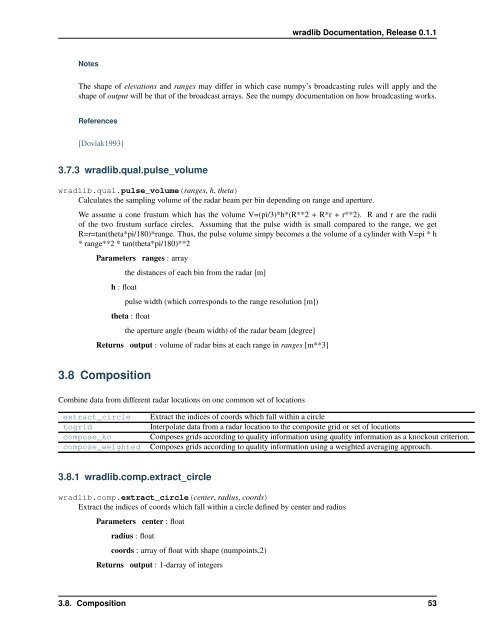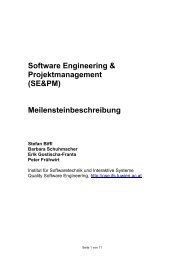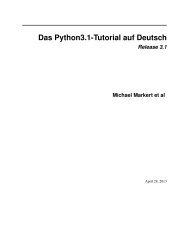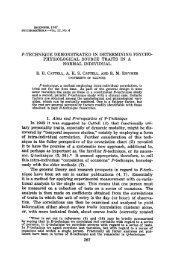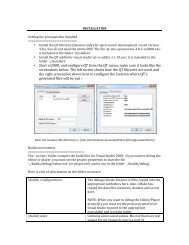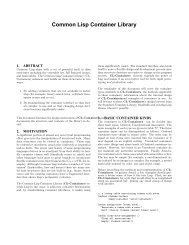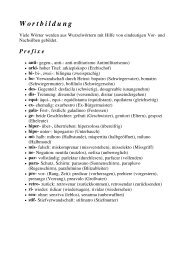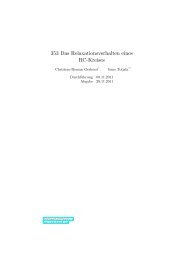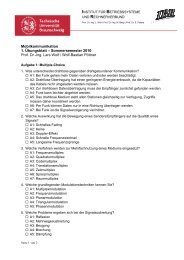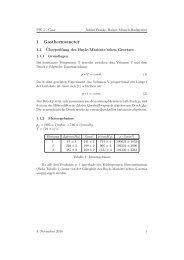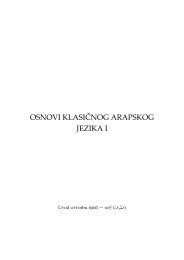wradlib Documentation - Bitbucket
wradlib Documentation - Bitbucket
wradlib Documentation - Bitbucket
You also want an ePaper? Increase the reach of your titles
YUMPU automatically turns print PDFs into web optimized ePapers that Google loves.
<strong>wradlib</strong> <strong>Documentation</strong>, Release 0.1.1<br />
Notes<br />
The shape of elevations and ranges may differ in which case numpy’s broadcasting rules will apply and the<br />
shape of output will be that of the broadcast arrays. See the numpy documentation on how broadcasting works.<br />
References<br />
[Doviak1993]<br />
3.7.3 <strong>wradlib</strong>.qual.pulse_volume<br />
<strong>wradlib</strong>.qual.pulse_volume(ranges, h, theta)<br />
Calculates the sampling volume of the radar beam per bin depending on range and aperture.<br />
We assume a cone frustum which has the volume V=(pi/3)*h*(R**2 + R*r + r**2). R and r are the radii<br />
of the two frustum surface circles. Assuming that the pulse width is small compared to the range, we get<br />
R=r=tan(theta*pi/180)*range. Thus, the pulse volume simpy becomes a the volume of a cylinder with V=pi * h<br />
* range**2 * tan(theta*pi/180)**2<br />
Parameters ranges : array<br />
h : float<br />
the distances of each bin from the radar [m]<br />
pulse width (which corresponds to the range resolution [m])<br />
theta : float<br />
the aperture angle (beam width) of the radar beam [degree]<br />
Returns output : volume of radar bins at each range in ranges [m**3]<br />
3.8 Composition<br />
Combine data from different radar locations on one common set of locations<br />
extract_circle<br />
togrid<br />
compose_ko<br />
compose_weighted<br />
Extract the indices of coords which fall within a circle<br />
Interpolate data from a radar location to the composite grid or set of locations<br />
Composes grids according to quality information using quality information as a knockout criterion.<br />
Composes grids according to quality information using a weighted averaging approach.<br />
3.8.1 <strong>wradlib</strong>.comp.extract_circle<br />
<strong>wradlib</strong>.comp.extract_circle(center, radius, coords)<br />
Extract the indices of coords which fall within a circle defined by center and radius<br />
Parameters center : float<br />
radius : float<br />
coords : array of float with shape (numpoints,2)<br />
Returns output : 1-darray of integers<br />
3.8. Composition 53


